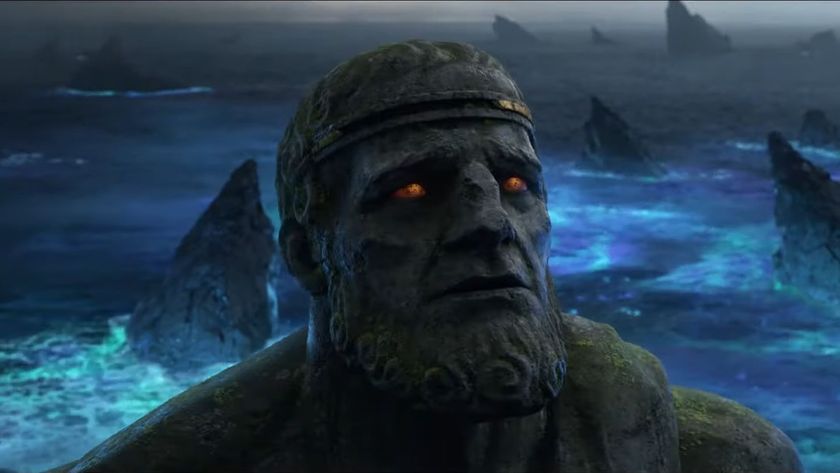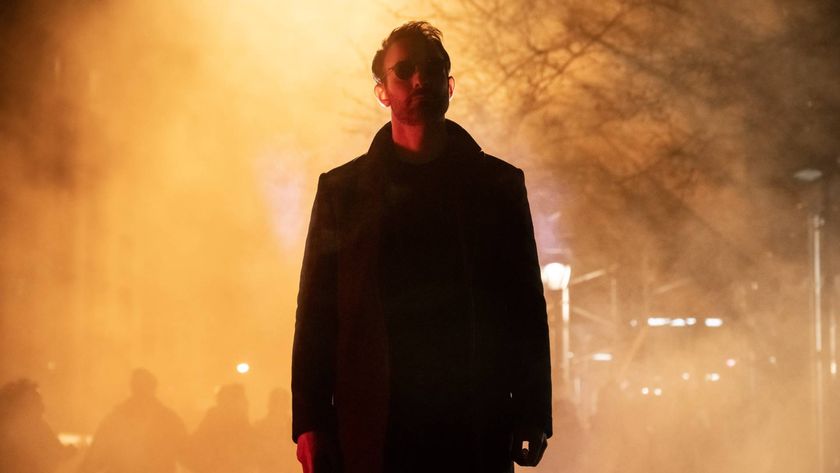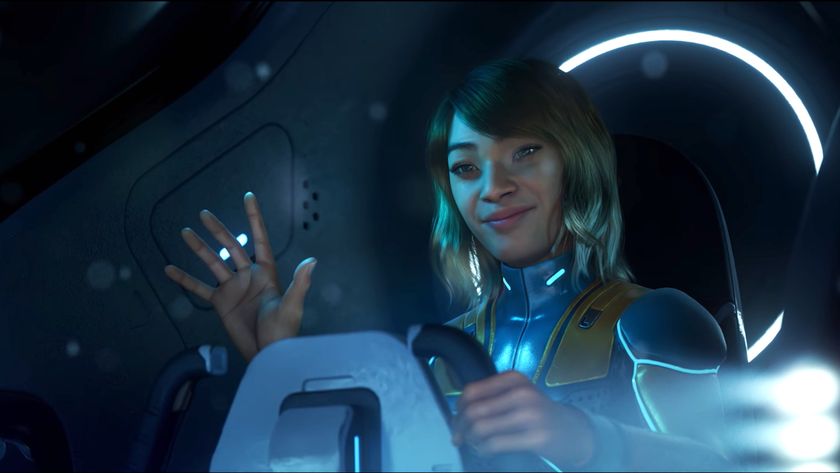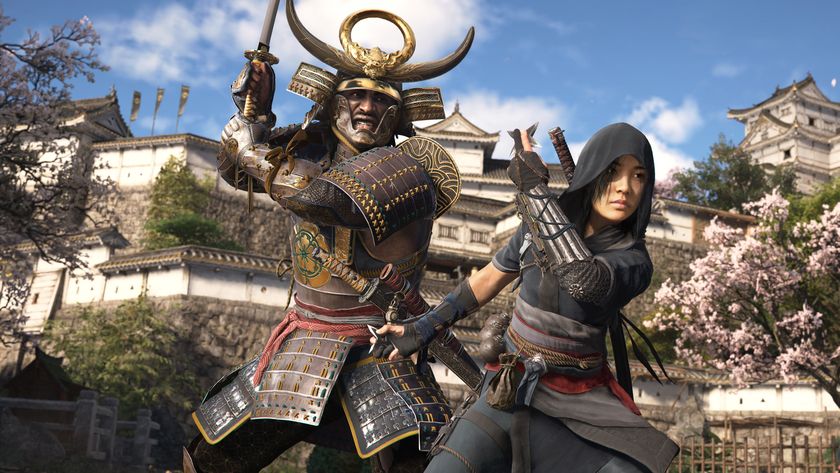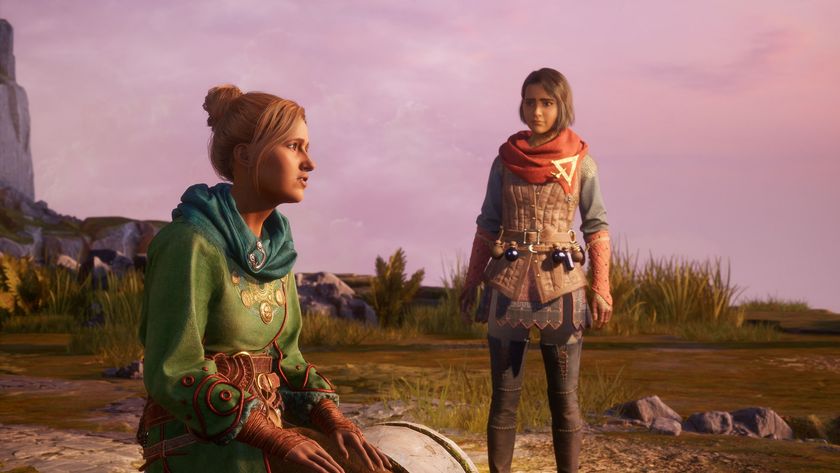On Uncharted 2's 10th anniversary, its developers look back on the making of a perfect sequel
Bruce Straley, Robh Ruppel, and Jonathan Stein reflect on the making of Uncharted 2
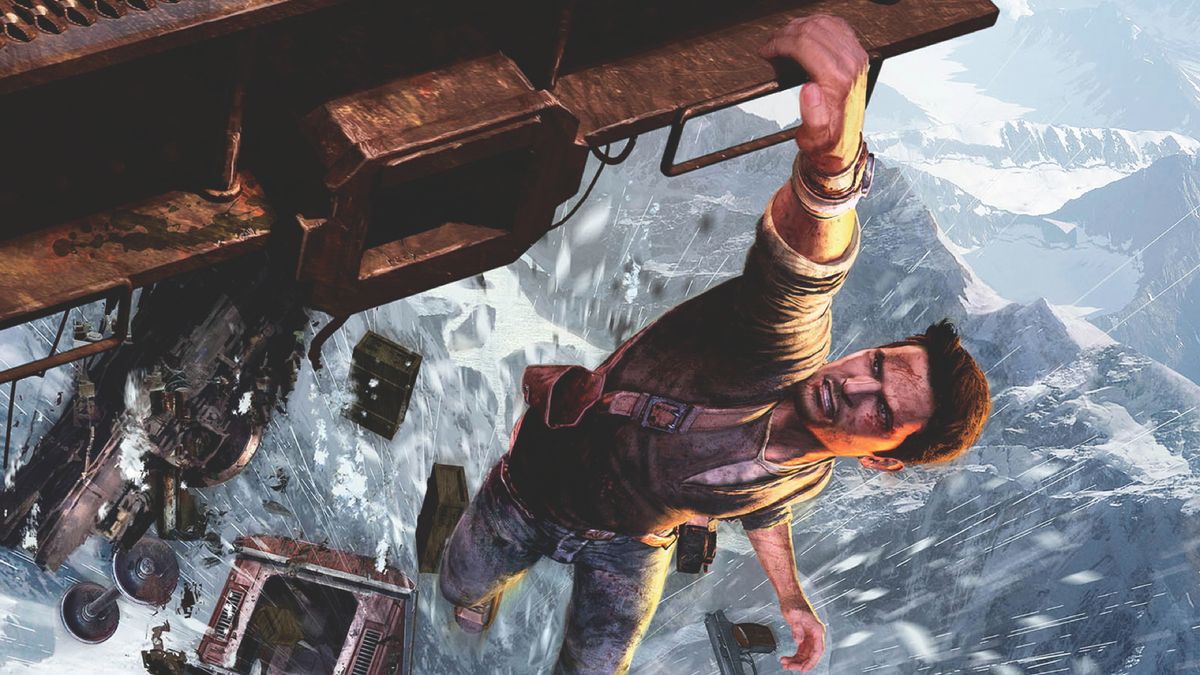
At the end of Uncharted 2: Among Thieves, Nathan Drake is returning home a hero. He's defeated the bad guy, won back the affections of his true love, Elena, and even uncovered the lost kingdom of Shambhala… albeit not long before triggering its collapse into permanent ruin (hey, nobody's perfect).
"So, where do we go from here?" asks Elena, one arm tenderly looped through Drake's as the enamoured pair watch the sun dip behind the snow-capped crests of the Himalayas. "I don't know," replies our protagonist, coyly, "I haven't thought that far ahead."
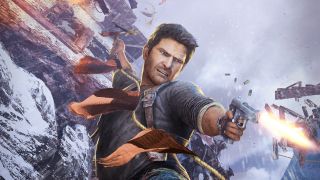
Game Uncharted 2
Developer Naughty Dog
Publisher Sony Interactive Entertainment
Platforms PS3, PS4
Release 2009
It's the epitomical scene for this PlayStation icon; the charismatic, ever optimistic improv artist who – let's face it – is basically that one friend in every Whatsapp group who never responds to messages unless it's to apologise for forgetting your birthday. More than that, though, Drake's comments are a fitting reflection of developer Naughty Dog's own piecemeal approach to making consistently high calibre games, as explained by Uncharted 2's director, Bruce Straley.
"Everything we do is on a one-at-a-time basis at Naughty Dog," reveals Straley. "We've never considered any project as part of a franchise production, and that's mainly because we can't think that far ahead. We therefore tried to make Uncharted 2 a sequel that you could pick up cold without having played Drake's Fortune, easily accessing the characters, the world, and the story without knowing anything about Drake's history."
Greatness from small beginnings
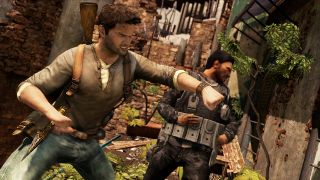
Straley had previously worked on 2007's Uncharted: Drake's Fortune as co-art director, but – after development on that game had seen director Amy Hennig overburdened with sole leadership of the project – a frank conversation with Naughty Dog's co-president Evan Wells saw him promoted to head up production on the sequel alongside Hennig as development partners. In preparation, the pair (along with Neil Druckmann and Josh Scherr, who made up the rest of the project's core writing team), attended one of author Robert McKee's famous storytelling seminars in downtown Los Angeles and – according to Straley – it was here where the seeds of Uncharted 2 were really born.
"I vividly remember having a clear 'eureka!' moment, and all of us engaging in these really rich discussions during the seminar breaks about the hero's three arc structure, and this idea of the gap between expectation and results. You set up an expectation for the protagonist, and something obstructs the way there and forces them to overcome that obstacle. That's storytelling 101, but we also realised then and there, that's game design too. So to tether those story beats to the gameplay in a more meaningful way was the foundation that got this team of four people to really look at Uncharted 2 as a holistic experience."

"That's storytelling 101, but we also realised then and there, that's game design too."
Bruce Straley, director
In light of this newfound epiphany, Naughty Dog looked to the film industry for Uncharted 2's pre-production recruitment drive, in the hopes of furnishing that cinematic flair it was aiming for. Hollywood was just up the road from its sunny Santa Monica HQ, after all, and Robh Ruppel was thus brought on as the game's lead art director, having previously worked in visual development on a number of big screen Disney animations.
Sign up to the 12DOVE Newsletter
Weekly digests, tales from the communities you love, and more
"I had been playing a lot of games with my daughter before I joined the studio," Ruppel tells me, "and coincidentally a bunch of those games had been Naughty Dog titles, so to be part of that team for their next big endeavour was a hugely exciting prospect." As lead art director, Ruppel was responsible for taking Hennig and Straley's new, cineliterate vision, and turning it into a consistent visual language. "All the locations had to have a certain reality to them. That's something that Bruce was really emphatic about. He had this great phrase, 'keep everything core', meaning he didn't want it to be too concept heavy or imaginary, so whatever we did we had to research heavily."
To create Shambala, for example, Ruppel's team pored over the annals of Mesopotamian history and architecture to conjure a completely imagined place that nevertheless looked just as much a work of reality as one of fantasy. "Trying to come up with a unique location that's never been seen before, but also feels like it fits within our world and has a believable history... it's hard to design something from scratch that has all those elements," he admits. "We eventually combined the two motifs – the pyramid and the ziggurat – to form the basis of our environmental storytelling, to make sure Shambala felt like it could appear in the pantheon of great monuments of the ancient world."
Uncharted territory
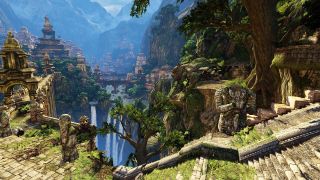
Like Ruppel, Uncharted 2 was also Jonathan Stein's first project in 'The Kennel' (the playful term of endearment that Naughty Dog employees use to refer to their spacious studio building), but his previous experience at Monolith Productions and Nintendo set him up well for work as a Game Designer on Nathan Drake's sophomore adventure. In conversation, he looks back on Uncharted 2: Among Thieves with great fondness, nostalgia, and pride.
"I remember first showing up at the studio and being almost overwhelmed with the excitement amongst the team,'' says Stein. "There were so many passionate and motivated people, all of whom were eager to think about the game holistically and outside of their disciplines, which is something that's hard to foster at a studio. I, for example, was personally thrilled about the prospect of getting to work with the third person perspective, and the camera work that came with it, as I'd done a lot of first person games prior to that, which has its limitations when it comes to cinematography."
Stein and the design team were responsible for building spaces and sequences that balanced Uncharted's core mechanics of combat, platforming, and puzzles with ambitious, Hollywood-style set pieces, all while closely following Straley's core design philosophy "to keep the player in control as much as possible."
"It's something I really pushed to put into practice on Among Thieves," explains Straley, who admits that he can be a bit of a "bull in a china shop" when it comes to collective decision making in the development pipeline. "If there was something that I didn't like in the design department, then I would go in and express myself quite clearly about that. I could have been nicer, but that's hindsight, I guess!"
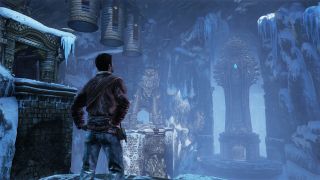
"I remember showing up at the studio and being almost overwhelmed with the excitement amongst the team."
Jonathan Stein, game designer
Stein himself remembers working with the likes of Straley, Hennig, and Druckmann as a tough but edifying experience, all of whom who he describes as "extremely motivated, intense, driven, but also a lot of fun."
"One great success that I would credit all of them with is creating a strong sense of what we were making, even beyond the usual learnings that you get from working on a sequel,'' Stein tells me. "Everyone in the studio just had a really good sense of the characters, the tone, and the standard of quality we were aiming for. They all worked hard to make sure everyone was instilled with that so we could make well informed micro-decisions along the way, without necessarily having to consult them for every single design choice."
That philosophy to keep almost everything in Among Thieves "on the stick", though, is exactly what elevated Uncharted 2 above both its predecessors and contemporaries in the genre. 10 years later, Straley can safely say that the game's achievements were worth the uphill battle in winning everyone over to his vision, not to mention vaulting all the extra design hurdles that came with it.
"If there's an emotional beat or piece of exposition that player absolutely needs to hear, then it can be in a cutscene but, aside from those, if you can put the experience on the stick, involving the player in the moment, that is truly using our medium in the best possible way. You're making a game that's telling a story rather than making a story that happens to be in a game."
Drake's on a train
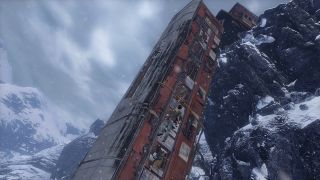
You can't talk about Uncharted 2 without paying tribute to its very first moments; a hair-raising, 'in media res' opening that sees Drake escaping the debris of a train wreck by the skin of his teeth. The game follows this baptism of fire by jumping back and forth between then and several months earlier to gradually reveal how our hero wound up in such a precarious situation to begin with.
It sets the groundwork for a tautly structured narrative device that makes full use of its cultivated dread; the next time Drake encounters that train, chugging along at full pace through the Nepalese jungle, a lump in the throat forms as you realise what's about to happen, cursed with the knowledge of how it ends for our hero. We owe a lot of credit to Stein for bringing the entire locomotive sequence to life but, according to Straley, the move to begin Uncharted 2 with Drake at rock bottom came out of a last minute decision late into development, after Druckmann brought the idea to the writing table.
"That wasn't our original opening, actually,'' Straley reveals. "It was a more of a simple, linear three act structure, which made it a bit of a slog to get into the story. It was Neil, pretty late in production, who came up with the idea to take the middle section of this train wreck and put that at the beginning, and then to intersplice some of the story bits to create this timeline that jumps back and forth. It doesn't matter when a change like that comes into production; if it makes the experience better, then nine times out of ten we go for it."
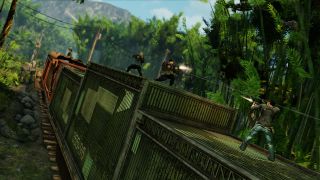
"It was Neil who came up with the idea to take the middle section of this train wreck and put that at the beginning."
Bruce Straley, game director
For Stein, that meant his baby – the level he had been working on for months – was to become the scene which opens the game itself, and the designer recalls the heady mix of exhilaration and stress that came with that unexpected weight of responsibility.
"I remember Neil telling me in a meeting that it was going to be the opening, and there was a real sense of excitement and fear about it. My main worry was that our audience might actually have a little bit of trouble with the non-linear nature of the narrative, but during development there had been an explosion of time travel related TV shows and movies with more sophisticated narratives, so by the time release rolled around people were very comfortable with that kind of unconventional structure, and it just wasn't an issue."
Designing the train sequence itself, both the opening escape and the unfolding carnage that bookends the second act, was a gargantuan task that demanded a seamless marriage between Naughty Dog's in-house technology, forward-thinking game design, and growing aptitude for operatic storytelling. For the concept artists, the challenge was to visualise a breathtaking tour of natural scenery that nevertheless abided to the parameters of Uncharted's gameplay.
"The creative team had come up with what they wanted to do already. Our job was just to devise a train that looked interesting, along with the mountainside that its set on, making sure that it felt both impressive and scary," explains Ruppel. "You don't realise how much attention we put into things like the ratio of snow versus rock, the type of rock, and so on, but it all feeds into creating a consistent visual language that tells its own story for that sequence."
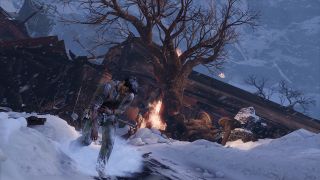
For Stein, the inspiration for building the level came as much from the toys he used to play with as a kid as it did the concept art that Ruppel's team produced: "When I started at Naughty Dog, one of the first things I did was grab one of the model train cars they had in the office and use that as a guide to make a proxy. From there, I was able to rig up three train cars hanging off the cliff pretty quickly, and then it just became a very long iteration process of setting up a series of vignettes that showed off the climbing mechanics. There's something like 60 custom cameras that trigger one after the other for that sequence, with a lot of attention on framing it in such a way that the action is easy to execute."
"I'm proud of the fact that most people don't realise the whole thing is basically a tutorial level, but it is very much an encyclopedia of Drake's climbing mechanics, presented one after the other. The whole thing has a real sense of threat about it, yet it's extremely difficult to fail that sequence; it's a sheep in wolf's clothing!"
Drake's legacy
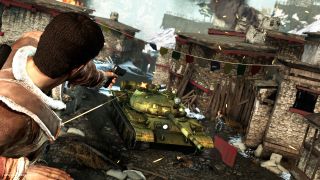
Despite two critically and commercially successful sequels (and a fantastic spin-off in the form of Uncharted: The Lost Legacy), Uncharted 2: Among Thieves is still widely considered the pinnacle of the series to date; a game that came together so perfectly for its time and place that it's practically a cliché. You probably won't be surprised to hear that the people who worked on Uncharted 2 agree wholeheartedly, describing the creative process as a lightning-in-a-bottle, seat-of-your-pants experience, one in which the stars aligned for a project that, while not without its moments of hardship and tension, came together like pieces of a puzzle falling neatly into place.
"Among Thieves is absolutely my favourite and, for me personally, the best entry in the franchise as a whole, not least because it was such a formative experience for me to work on, and has defined the rest of my career since," admits Straley, who went on to head up development with Druckmann on what would eventually become The Last of Us, another Naughty Dog hit. "We could not have made Uncharted 3 or 4 without Among Thieves, and we certainly couldn't have made The Last of Us without everything we'd learnt on that game either."
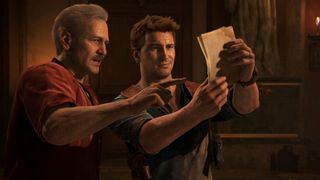
Looking for a new adventure? Here are the best Uncharted games, ranked from worst to best
Ruppel, who eventually won a GDC Award for Best Art Direction for his work on Among Thieves, also has nothing but fond memories of the entire experience, and even more praise for the team he feels lucky to have worked alongside. "Bruce was the right guy for the job in perfecting the play experience, Amy was fantastic for guiding the story and the believability of character and dialogue, and Neil was crucial for implementing both of those pillars into the design of the game itself while maintaining a consistency of product," Ruppel tells me. "You can't plan this kind of meeting of minds where everyone's on the same page about the level of ambition and goals for a project, but when it happens, you're so thankful that you were there, because it's such a precious moment for your career or even your lifetime."
Naughty Dog knew it had something special on its hands then, but even Stein admits that – at the time – none of the team really understood just how much of an impact Uncharted 2 would have upon the gaming landscape following its launch. The game put Nathan Drake on the map as a PlayStation mascot, selling millions, earning near universal acclaim, inspiring a new generation of action games to come (including one of its muses in the form of Square Enix's rebooted Tomb Raider series), cementing Naughty Dog's status as a prestige studio alongside the likes of Rockstar and BioWare, and paving the way for a now in-the-works Uncharted movie starring Tom Holland in the lead role.
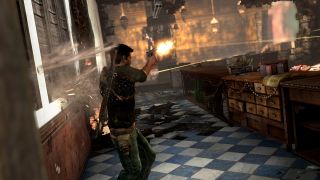
"You can't plan this kind of meeting of minds where everyone's on the same page about the level of ambition and goals for a project."
Robh Ruppel, art director
"I'm largely motivated by abject fear that what im working on will not be loved by the end user," jokes Stein, "so you could say I wasn't prepared for the sheer volume and extent of the positive feedback we received both immediately after launch, and in the years following. I do think we had some very successful playtests, which often gives you great confidence in the ability to identify and solve a bunch of problems to make a game the best it can be. Even then, though, the way people talk about Among Thieves still shocks me, but in a good way!"
I ask Straley, who left Naughty Dog in 2017 and has been on hiatus from games development ever since, if he'd ever like to see another entry in the Uncharted series, purely from his perspective as a fan now that's he is outside of the kennel for good. His answer is at once unsurprising, but also the best reflection yet of how important Uncharted 2 is as a metric touchstone for the franchise itself.
"I would love to play another Nathan Drake game, but I would want to see it done in a way that is mindful of the original concepts that we pushed for in Uncharted 2. That is, keeping everything core, everything on the stick, all the set pieces playable. If I was back there, I would be pushing Uncharted even further into the realm of player choice, and exploring how that affects the adventure. More than that, though, the industry still needs well-drawn characters and good storytelling that doesn't take itself seriously like a lot of games now tend to in the triple-A space."

If Straley's wishes come true, then we may indeed all find ourselves fawning over Uncharted 5 in another ten years from now. Hell, Drake's daughter, Cassie, might even have her own separate trilogy by then. But all of that is postulation, based only in empty hypotheticals. One thing you can bank on for 2029, though, and of this I am certain, is that people will still be talking about Uncharted 2: Among Thieves.
Not only did Naughty Dog's seminal epic crack the code to marrying Hollywood's cinematic muscle with gaming's agency of play, it made important strides in showcasing what the medium is capable of, inspiring countless other developers to aim higher, push further, and explore beyond the status quo. Nathan Drake may be an improviser, but the heritage he leaves behind holds a permanence in gaming history that can never be shaken.
For more, check out the best new games of 2019 and beyond on the way, or watch the video below for our latest episode of Dialogue Options.
I'm GamesRadar's Features Writer, which makes me responsible for gracing the internet with as many of my words as possible, including reviews, previews, interviews, and more. Lucky internet!
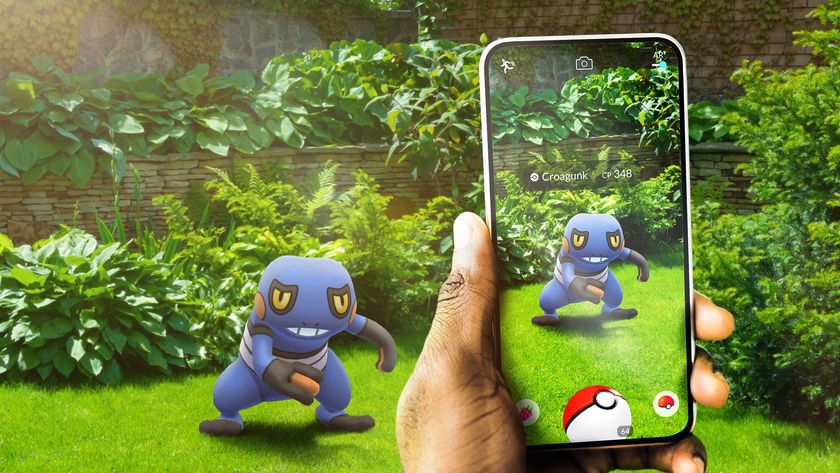
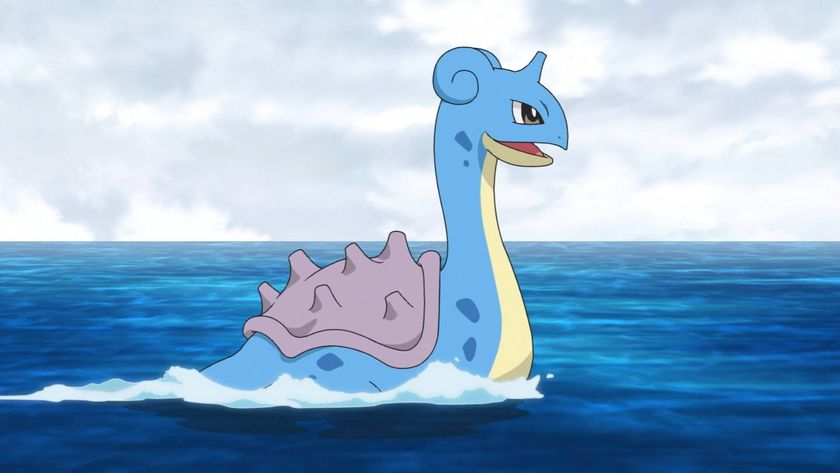
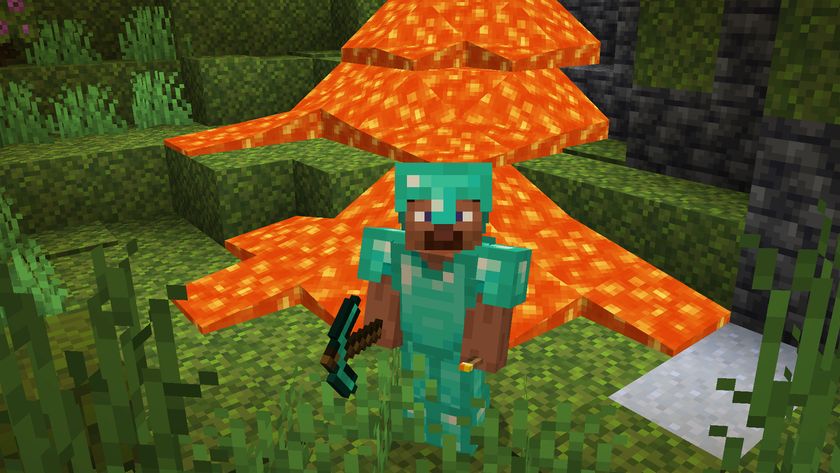
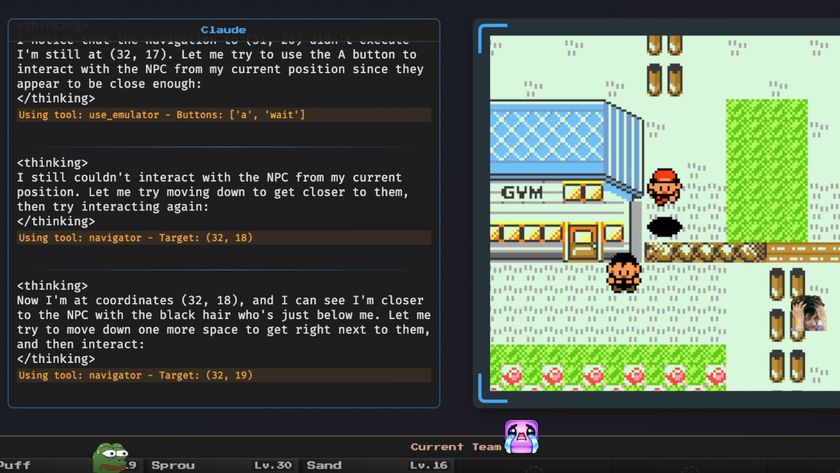
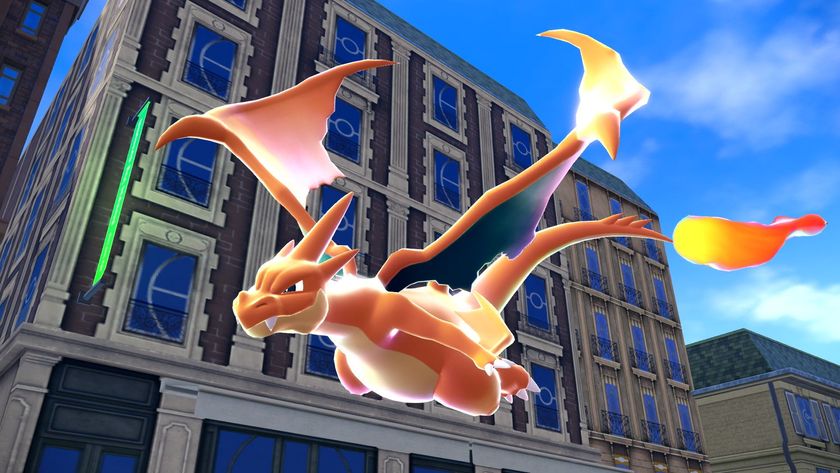
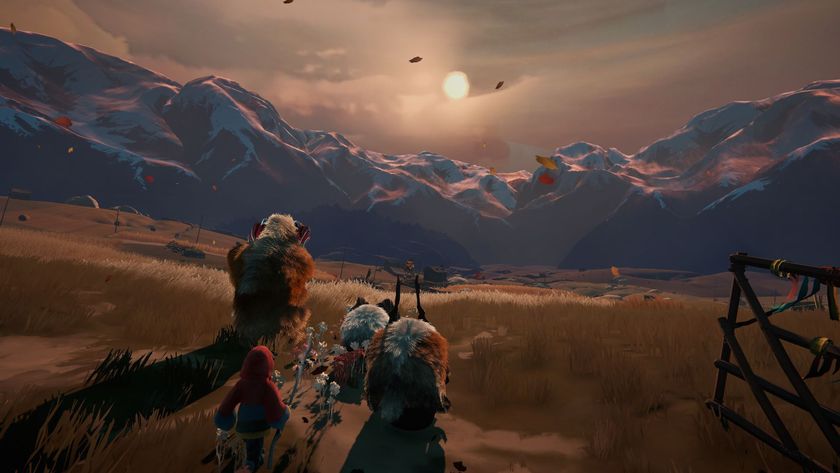
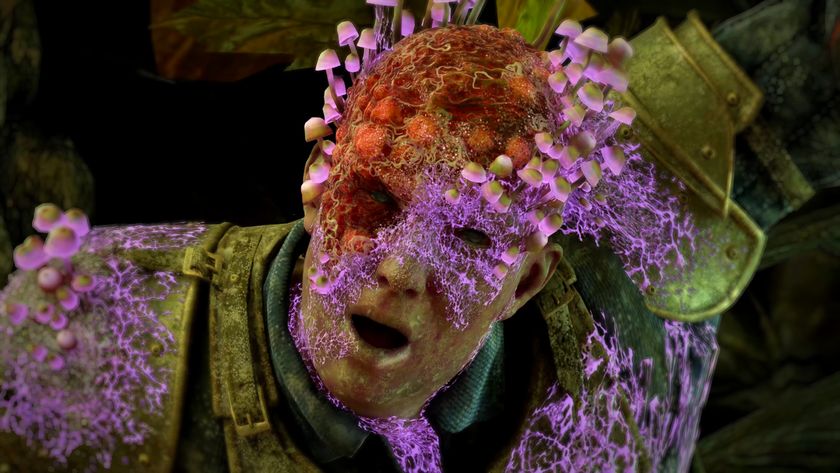
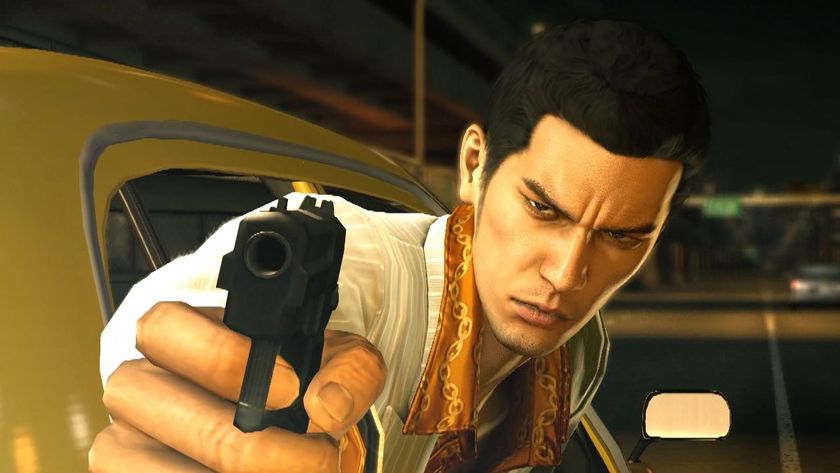
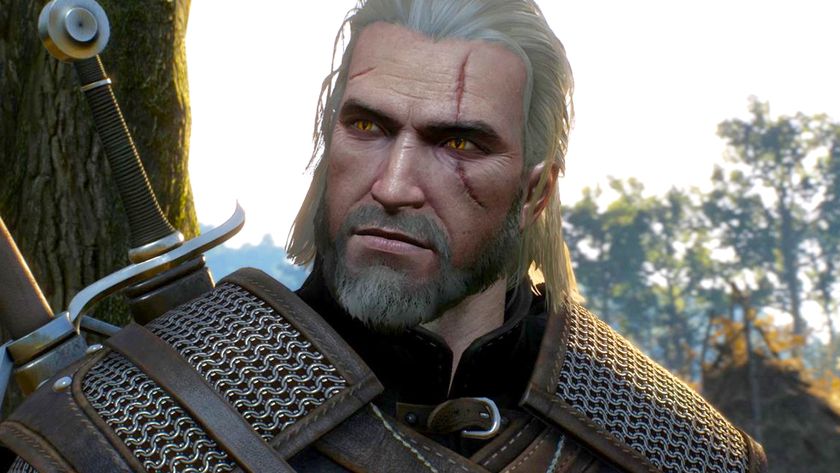
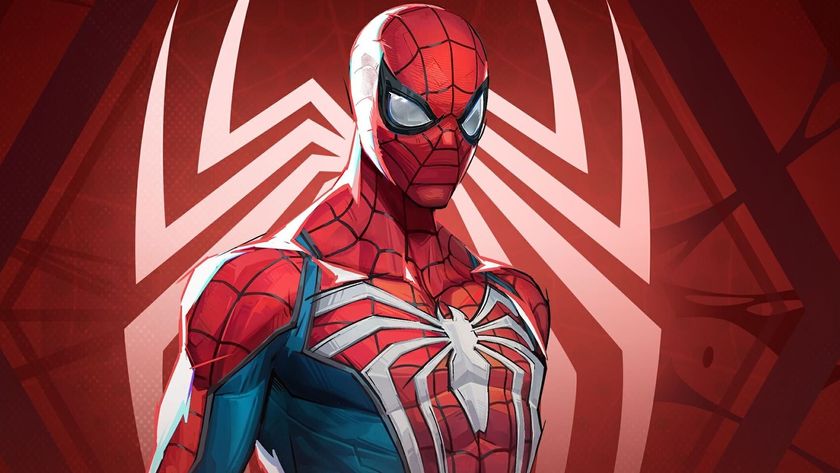
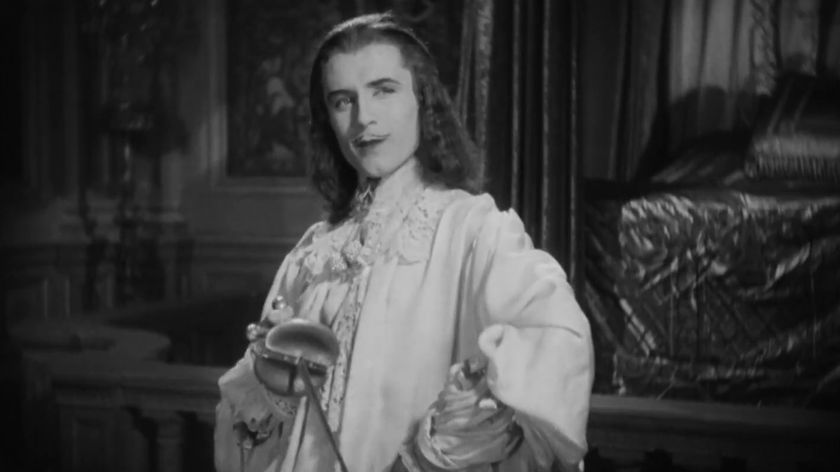
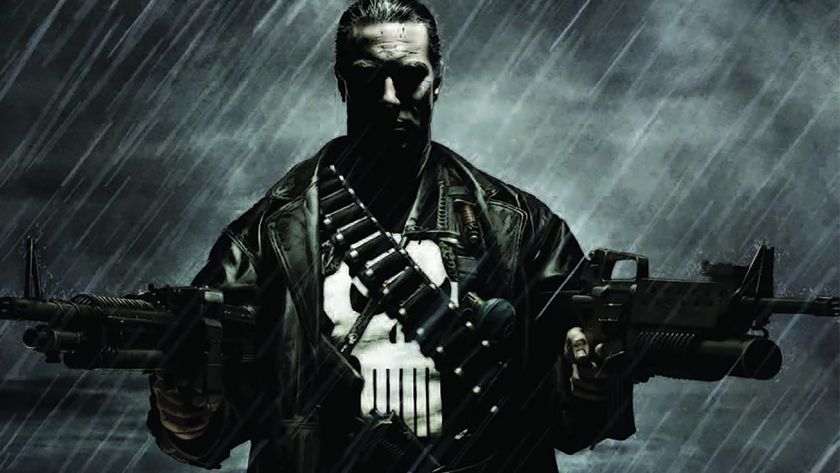

Pokemon Go developer Niantic is being bought for $3.5 billion, CEO says it'll help its games be "'forever games' that will endure for future generations"

Former Pokemon world champ uses a "stupid strategy" that "should never work" to transform a Lapras into an OHKO machine so powerful it can even take out enemies in alternate dimensions

